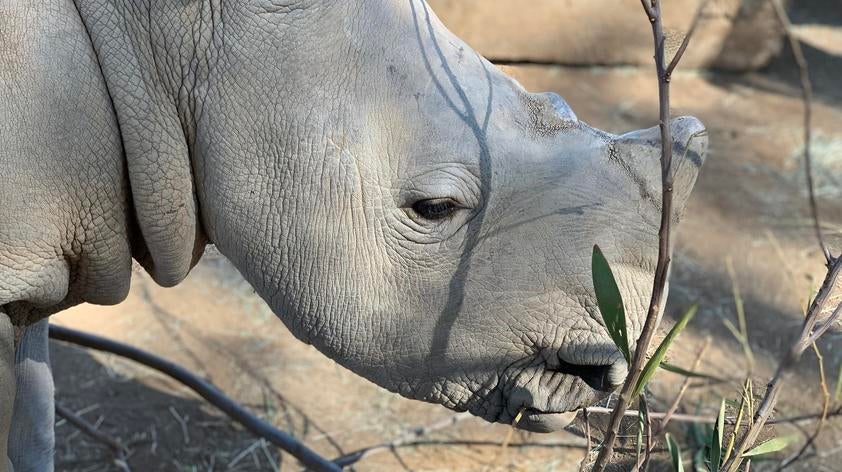
Why study hormones?
In the Reproductive Sciences Endocrinology Lab, we study hormones. Why study something as miniscule as a hormone in a 4,000-pound animal like a rhino? Hormones are small but mighty chemical messengers that travel through the bloodstream and send critical signals to all rhino organ systems. These signals affect many important processes like growth and development, reproduction, metabolism and behavior.
Our group is particularly interested in the female reproductive hormones progesterone and estrogen. After these hormones make their way through the bloodstream they are metabolized in the liver and excreted in urine and feces. Every year the Endocrinology lab processes thousands of these samples for hormone analysis!
Sample subjects range from the 8 gram pacific pocket mouse to the 14,000-pound African elephant. From these samples, we obtain insight into hormone signaling in a wide range of species, all with their own unique methods of reproduction. What is so fascinating to me is that the same hormone, progesterone, maintains pregnancy for 22 days in pacific pocket mouse and for 22 months in African elephants!
Progesterone or the “pregnancy hormone” is the hormone we measure the most often in female fecal samples. Progesterone is not only important for maintaining pregnancy it also plays a key role in ovarian cyclicity. When a female ovulates, progesterone rises for a short period of time. If the female does not become pregnant progesterone levels drop. The lengths of these cycles vary from a very predictable 15 day cycle in an okapi to a more variable window of about 30 to 70 days in a rhino.
Knowing cycle information is very important in a zoo setting for multiple reasons. Many animals such as okapis are solitary in the wild, meaning they do not spend all their time with their mate, usually only coming together for breeding and then going their separate ways. In a captive setting it is important to know when a female will be receptive to a male so they can be housed in the same enclosure, mate, and then be separated again. In many cases, behavioral data and hormone data can be combined to time this match making. Knowing the timing of a cycle is also important for incorporating reproductive technologies such as artificial insemination (AI).
Estrogen is the other key female sex hormone. Estrogen is critical for the development of female physical changes during puberty and the timing of reproduction. Estrogen has proven to be difficult to measure in rhinos, but in other species we can measure elevations in estrogen signaling growth and development of an oocyte. Too much or too little estrogen can be problematic for reproduction - very much like Goldilocks and the 3 bears. We want estrogen levels to be just right. What this looks like for each species and even each individual can be quite variable, but we are up for the challenge. Mapping out fecal estrogen and progesterone profiles for multiple species and individuals is our expertise, and while it might be a dirty job, the information gained is worth the mess.
Video shows how a solvent (in this case methanol) is used to extract the hormones progesterone and estrogen from the dried fecal material.













